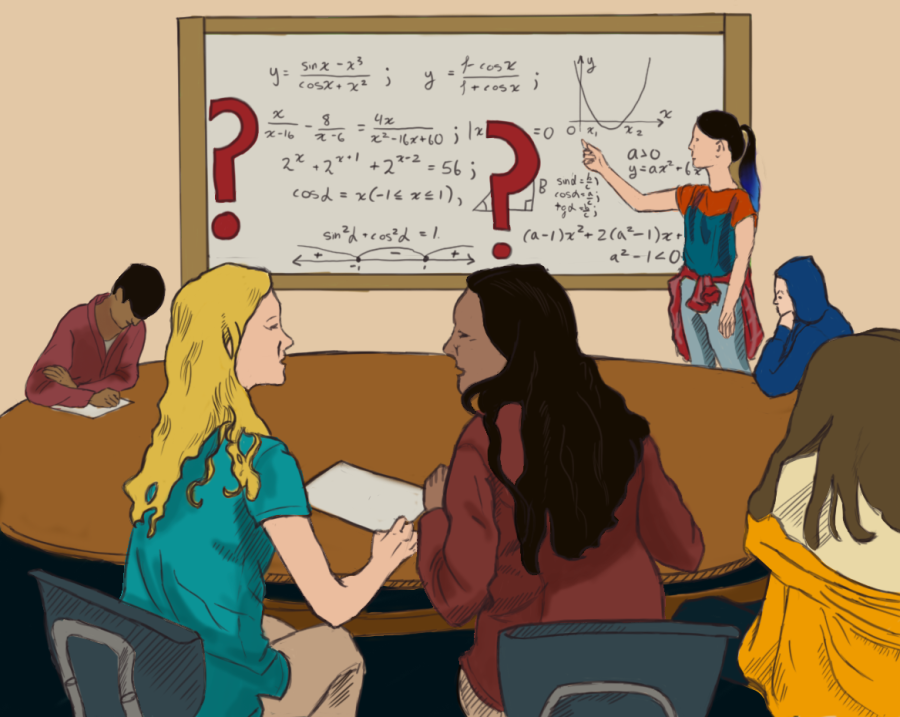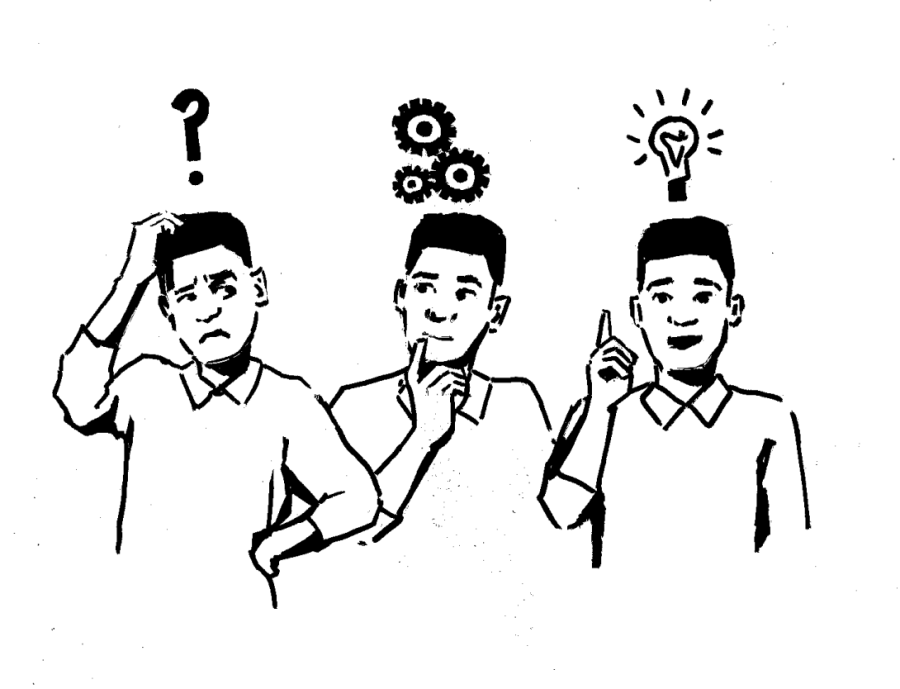PBL: A problematic based learning
February 3, 2023
Picture this: I’m sitting in my ninth grade Geometry class, head in my hand, looking at the worksheet in confusion. I look around to observe others struggling as well, but I also see students who have already finished the sheet with ease. This was the first time I came to understand what problem-based learning (PBL) was, and the toll it would take on my grades along with my mental capacity.
Students who are new to this method could potentially experience feelings of doubt or a drop in their academic performance due to a rigor that is not inclusive to all learning types. Not all classes at Masters operate using this method, as PBL targets math and science courses.
For those who may not be familiar with the term, PBL is a learning style in which students apply their past knowledge to new material, without having been taught first. This differs from traditional learning because students don’t have to memorize the material before applying it conceptually.
My experience regarding PBL has generally been negative, due in part to learning differences, and also being forced to teach myself the material outside of class. While I understand that PBL may be an effective method for some, it does not work for everyone, and I believe that students should be able to take a course without having to teach themselves.
Ninth grade geometry was my first experience with PBL, and I was almost forced to drop the class. The class plan was a structure I wasn’t used to, which involved completing worksheets and writing the homework on the board, but this was all without teaching the necessary math prior. I went for extra help and had a tutor outside of school, but ultimately it was difficult to catch up on a subject that was constantly moving forward. I felt I was stuck in an honors class that I wasn’t even signed up for. Math is already one of my tougher subjects, which meant that the PBL style of teaching, combined with my learning differences, felt like a battle I wasn’t going to win.
Aimee Ayala, a senior, has been at Masters since seventh grade and has taken two PBL courses, one of them being regular geometry. The second course she took was Precalculus during the second half of her junior year at the High Mountain Institute (HMI). Ayala feels that PBL is not a one size fits all curriculum, and comes with a large downside. “I don’t think it’s an effective way to teach or learn concepts. With Geometry for example, it was all so abstract. There wasn’t really much of a foundation you got when taught using PBL,” she said.
Ayala maintains that it’s an isolating way of learning, because when it’s the same students in class who figure out every worksheet, while you don’t get it, you feel like you’re falling behind. “PBL makes you feel alone, partly just because the idea of getting concepts explained to you by your classmates feels condescending. And if you have a hard time with math, or a learning difference, it’s going to be a difficult setting to get used to,” she said.
There are benefits to PBL such as more collaboration with peers and learning how to navigate teamwork. Stella Carey, upper school math teacher, is a supporter of PBL because of the critical thinking students learn to develop, but also recognizes that it’s a difficult technique to learn for teachers. “In PBL, the role of the teacher is much more as a guide and support, which is challenging to figure out how to give guidance without giving the whole problem away,” Carey said.
However, I feel those benefits are minimal because there are aspects of a traditional class such as group projects that will help to strengthen those skills all while teaching the material beforehand. Scaffolding is a useful technique in which students are presented with some background knowledge before applying concepts. As Carey said, “Scaffolding is when you are provided steps by your teacher to better assess the problem.”
I believe students shouldn’t have to hold themselves back from more advanced courses because of PBL. Honors Algebra two/trigonometry, for example, is another PBL course at Masters. What makes an honors course shouldn’t be the use of PBL, but rather learning the material faster and more assessments, which is standard in most other classes.
However, what I do appreciate about this part of the curriculum is that there is a choice to take it. This is different from Geometry, a course all students must take, where students are thrown into the deep end, often in their first year of high school, and are forced to either sink or swim. “I think the PBL method should be abolished across all geometry classes. Don’t make every ninth grader do it,” Ayala said.
PBL: An Academic Necessity
Josh Markowitz argues that Problem Based Learning (PBL) helps students become better problem solvers.
Everyone had that one class. You know the class I’m talking about. The class when the teacher goes on and on AND ON about both relevant and irrelevant topics. Walking into class, you don’t know if they will talk about their last vacation or a lesson plan you were supposed to finish three classes ago. Allow me to present the solution: Problem-based learning.
Problem-based learning is a cornerstone of society’s educational learning process. The Cornell Center for Teaching Innovation explains that “Problem-based learning (PBL) is a student-centered approach in which students learn about a subject by working in groups to solve an open-ended problem. This problem is what drives motivation and learning. ” Unlike the other side of the spectrum with boring, old-fashioned lecture classes, PBL has proven to provide the necessary skills that are necessary for an ever-changing workplace, such as critical thinking skills, problem-solving abilities, and communication skills. It can also offer opportunities for working in groups and finding and evaluating research materials, which is a must in our current job environment.
However, let’s be honest. You don’t care about the facts. Let’s talk about the experiences. 8th-grade algebra I. The single most significant experience I have had in a classroom. I got to work with my friends, solve real-world based problems, and by the time tests came around… I truly felt prepared.
At Masters, PBL is a fundamental aspect of the learning process. Marianne Van Brummelen, the head of the Math Department here at Masters, said, “I think PBL also is really beneficial. You have to really think about how you communicate your thinking and what are the ways in which you can make your thinking and your own thinking process more clear to your peers.” With this, it can be taken into professional fields of work. Van Brummelen said, “Problem based learning for me is more has a higher level of transfer to life and to anything that requires that kind of thinking.” Even beyond math, Van Brummelen explained, “If you’re faced with a question, whatever it is, the thing you’re asking yourself is, what do I know that applies to this?”
Here at Masters, PBL is just as vital. Math teacher Ian Mook said, We’ll work on something where a result of the problem is not just the answer, but a understanding about some new piece of content that came up in the process of doing the problem.”
With this, I stand by PBL. It has helped me grow as a learner in and out of the classroom and to me, it is the part of the Masters learning experience that makes students a power for good in the world.



